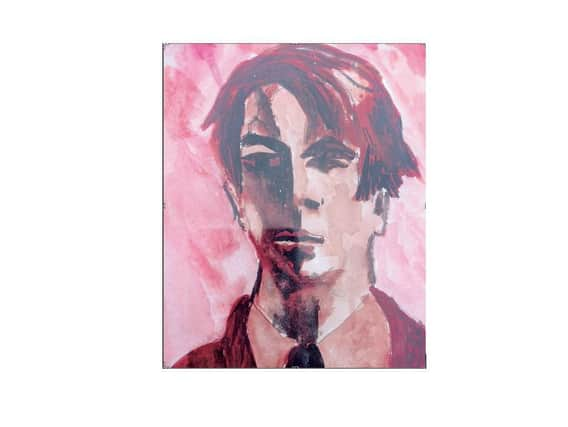Chichester's Oxmarket Gallery remembers one of the Beat generation’s leading writer-artists


The work of Gregory Corso will feature in Chichester’s Oxmarket Gallery from Tuesday, September 21 to Wednesday, October 3. Curated by the University of Chichester, the exhibition includes original works from 1950s and 1960s including his famed silent graphic novels.
The exhibition has been put together by Professor Dick Ellis and Professor Hugo Frey, from the university. As Hugo says, the exhibition positions Corso (March 26 1930-January 17 2001) as a perennial artist, producing traditional drawings, illustration, paintings and more experimental interventions in the space where text and image meet. The show comes in the 20th anniversary year of Corso’s death.
Advertisement
Hide AdAdvertisement
Hide Ad“Corso was not a trained artist, but his highly productive imagination led him to develop, at his best, an attractive facility, particularly in his loose sketches, cartoons and assemblages as he explored a wide variety of artistic styles and approaches.
“Some of these were experimental in nature. For example, he even explored the potential of strip cartoons and graphic narratives. His influences were fecund in their range, but French cartoonists, such as Siné, proved to be particular influences.”
The exhibition is the first European solo show of original works by Corso since the collected Beats show in Paris in 2016: “It brings together for the first time Corso’s poetic and visual outputs, showing how he was an accomplished creator across a very wide range of genres, poetic and visual.
“It needs to be noted that his achievement was uneven for, as a drug addict and alcoholic, he was in constant need of cash to feed his habits and often produced work to secure a quick cash sale. But even here, very often, he produced work possessing an often-endearing lightness of touch.”
Advertisement
Hide AdAdvertisement
Hide AdHugo said the exhibition comes as Corso is starting to be referenced a little more, particularly in a song on Bob Dylan’s most recent album.
“I think that the problem for the reputation of Corso was that some of what he did was quite contemporary and political. He was writing about contemporary politics which obviously felt very relevant at the time, but time passes and the political context changes whereas Jack Kerouac and Allen Ginsberg are perhaps people with a wider range of universal themes that relate to American youth. Also Corso produced an awful lot of work. Some of it is relatively canonic, but other elements are not.” But the Pompidou Centre exhibition in Paris five years ago has helped bring his name back: “He was the least known of the Beats, the third in line behind Kerouac and Ginsberg, but that mixture of poetry and politics and visual culture is fascinating.”
Dick Ellis added: “Corso was not the only Beat writer to turn to other creative genres. Many other figures in the Beat movement turned to the visual arts to complement their poetic outputs – as part and parcel of their commitment to experimentally break down boundaries in every creative genre.”
The Funtington Players have also collaborated in the exhibition with a collective reading that will be a video installation at the Corso show.